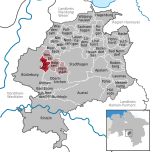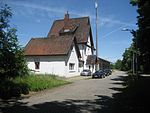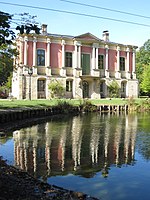Obernkirchen Sandstein
Berriasian StageCoal formationsCoal in GermanyDeltaic depositsGeologic formations of Germany ... and 4 more
Ichnofossiliferous formationsLower Cretaceous Series of EuropePaleontology in GermanySandstone formations
The Obernkirchen Sandstein or Obernkirchen Sandstone is a geological unit in Lower Saxony, Germany whose strata date back to the Early Cretaceous. The remains of the dinosaur Stenopelix and numerous dinosaur tracks are known from the unit. The unit is a thin interval within the Bückeberg Formation As its name would suggest the lithology primarily consists of sandstone with thin intercalations of coal. This was deposited in a sandy barrier to lagoonal complex setting. The unit has historically been extensively quarried for its high quality building stone, which has been used as far away as Jakarta.
Excerpt from the Wikipedia article Obernkirchen Sandstein (License: CC BY-SA 3.0, Authors).Obernkirchen Sandstein
Seggebrucher Holz, Samtgemeinde Nienstädt
Geographical coordinates (GPS) Address Nearby Places Show on map
Geographical coordinates (GPS)
| Latitude | Longitude |
|---|---|
| N 52.3 ° | E 9.1 ° |
Address
Seggebrucher Holz 18
31691 Samtgemeinde Nienstädt, Tallensen-Echtorf
Lower Saxony, Germany
Open on Google Maps









